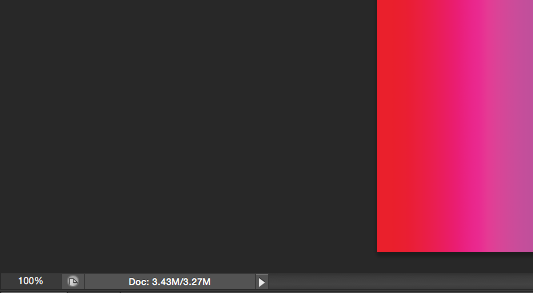In Computer Graphics we basically have to deal with two different kinds of image files:
Those based on pixels called bitmaps.
And those based on curves called vectors.
Here, it’s about the first ones. Photoshop is a bitmap editor. The images you’re dealing with are made out of pixels which is an acronym for picture elements. Small squares of a single color. Put together like a mosaic they become an image.
The number of pixels is setting the image size. Let’s say we have an image of 1200 x 1000 pixels. This makes 1.2 Million pixels So, the image size is 1.2 Megapixels *
But digital files actually don’t have any size unless they are passing through some output device or are displayed. These devices – screens for example – are showing a certain number of pixels per unit of length. That’s what we call pixel density or image resolution.
Here, things start being complicated. A very common (and old) formula says: screen resolution should be 72 dpi. What does this mean? It means that 72 dots per inch (dpi) would be displayed. Dots? Yes. No. Screens are counting pixels. But one day in the early 1990 engineers said that one dot (which is coming from the typographical unit point) would correspond to the size of one pixel. And that a computer screen would display 72 pixels per inch (PPI). But this is a very rough calculation as there were differnt screen resolutions (Microsoft™ set 96 dpi) and things were displaying differently on different machines. Today, things have not become much better – besides the resolutions of the screens. An Apple Retina™ display has an up to 400 PPI Resolution – on very small screens. So, there is no fixed size of a pixel!
The image resolution determines the file size. 1200 x 1000 pixels at 300 dpi is using much more storage space than 1200 x 1000 at 72 dpi with the same dimensions.
In Photoshop you have to check the actual image size and resolution in IMAGE / Image Size. Here, you can adapt the dimensions to what you need.
So, let’s see.
1.
Image with 1200 x 1000 px at 300 PPI = 3.43 MB
2.
Image with 1200 x 1000 px at 72 PPI but same file size (3.43 MB)
= lower resolution but bigger dimensions.
3.
Image with 72 PPI downscaled (becoming smaller, yes.)
Play around with the options and it will become clear quickly.

But never forget: You can not increase the quality of a low resolution picture by increasing the number of PPI / DPI or it’s dimesions. It would not add any information, just increase the file size. It is like putting water into milk. This does does not make more milk, you just need a bigger bowl!
In the left corner below you can check the size of the file and at what scale you see it.
Pictures with Layers need much more storage space = More MB.
In addition, the pixels can contain more or less information (color depth) according to the output mode they are designed for. Here again, screen output needs less information than print. (see color modes – to come)
In print the output standards have developed a lot as well within the last years. But the questions of resolution have remained quite stable. And here it makes sense to deal with DPI – dots per inch. When you have to pass data to a printer you can always ask what their technical standards are. The general rule 300 dpi for print (saying that dots = points = pixels) is a good guideline.
Professional Computer graphics reclaim to be aware of what output medium you’re working for (often very different ones at once) and to adapt the quality of your image resources.
Questions?
Drop me a line at jmucomputergraphics@gmail.com.
* The order of the numbers always goes: 1. horizontal, 2.vertical.
So, 1200 x 1000 = 1200 wide, 1000 high = landscape
1000 x 1200 = letter.
This comes from the mathematical x/y axis order and is the same in any description of surfaces (inch, meters, acres, etc.)
Space is adding the z-axis in third order.
It probaly has it’s origin in very rudimental human perceptions: 1. horizon 2. plants (culture) 3. space (not sure – just for memorizing)
© illustration: jmucomputergraphics

